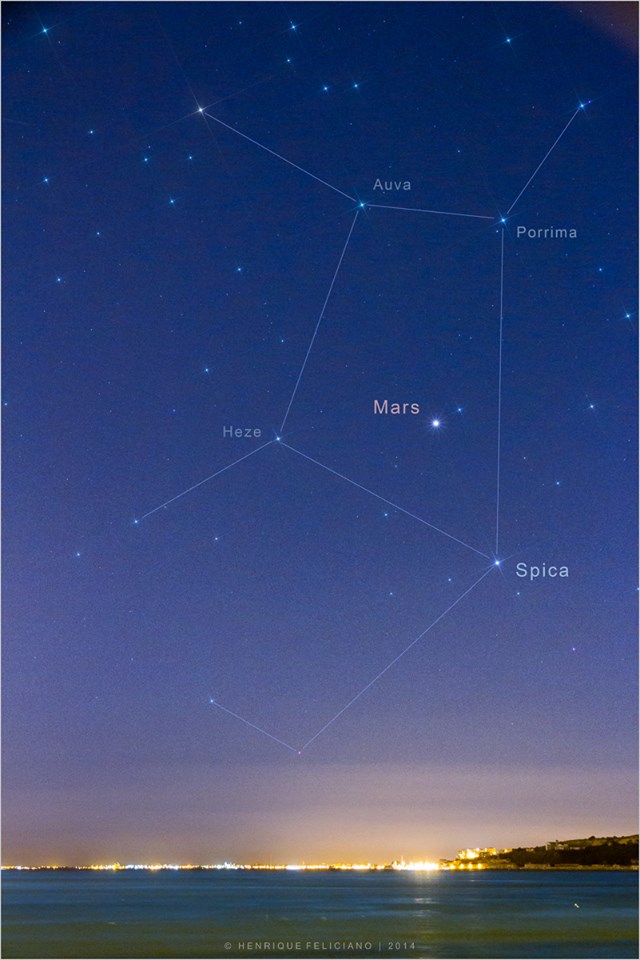Planets

Early 2014 has been an interesting time for stargazers, especially those who like to spot the planets.
The year began with Venus approaching inferior conjunction. Right after New Year's, the planet displayed a nice crescent phase. It looked big and thin when I last saw it, through a 90mm scope, on January 4 (one week before inferior conjunction). After Venus disappeared from the evening sky, Mercury replaced it. Late in the month, the innermost planet was a tiny bright dot low in the (S)west. It reached greatest eastern elongation at the end of January.
In contrast to low, inconspicuous Mercury, Jupiter is a bright beacon high in the east. Even a small telescope will show the Jovian disc and Galilean satellites.
The morning sky has its share of planets. Just before dawn, in the south, two stars appear, one right above the other. The higher "star" is the planet Mars, slowly approaching opposition. The lower star is Spica, of the constellation Virgo. Mars is currently passing Spica, but around opposition it will retrograde and turn back west. After retrograde motion ceases, Mars will resume its easterly course, and pass much nearer Spica than it presently is.
The "star" to the left or east of Mars/Spica is Saturn, the planet with the most conspicuous rings. Even farther east, Venus, now in the morning sky, rises before dawn.
